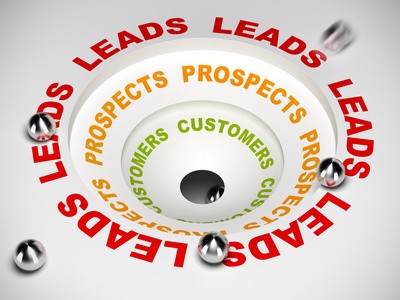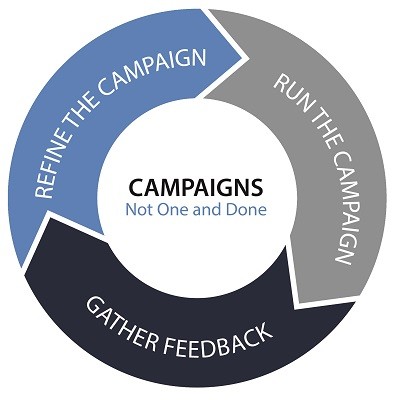Managed service providers can get real, quantifiable value from hosting an event for prospects or existing clients. Stick around because, by the end of this blog, you’ll be able to track the value your MSP receives from properly utilizing event marketing to pursue your goals.
JoomConnect Blog
You've got a shiny new website and it's time to start turning those visitors into leads, and then turn your leads into prospects. There are a lot of different paths you can take to do this, but first you'll need a basic understanding of the web marketing funnel.On your website, you need to have an offer. Frankly, you should have a few offers to cater towards the different ends of the marketing funnel.
Practically every marketer has an opinion about HOW to write a marketing email. A Google search of ‘B2B email marketing’ will reveal hundreds of thousands of websites, articles, blogs, videos, and infographics that offer best practices, templates, examples, etc. Often, these articles contradict each other and are created based on the author’s personal experience with very little corroborative data.
Having a well-managed list is a critical component to making the most of your marketing strategy. However, building and maintaining a list can be challenging if the right strategies aren’t employed. In order to optimize your marketing, it helps to know how to best put these strategies into play.
In recent months we have taken a look at how to direct people to your company's website using social media and how to make your site a resource-latent hub to garner additional sales opportunities from your company's website. This month we will take an in-depth look about branding and rebranding. It is important to focus on how your company's brand, can be as important as the services or goods you offer. This brand identity may give you the competitive advantage you've been looking for.
There are a few prerequisites to being a good managed service provider. Of course, you have to provide your clients service, and your delivery needs to be proactive. One of the most important considerations, however, is to have clients to provide services to. This means you are going to have to generate the leads to nurture into these clients. Let’s discuss how to do that.
Having a good lead list gives your business an opportunity to connect with potential future customers. Large enterprises have the resources to track down prospects online and add high-quality leads to their marketing lists, but this can be difficult to do for small businesses.
The ultimate goal of your marketing is to get prospects to your website. Your website is where you provide information about your company as a whole and the services that you provide. Through your website, prospects can contact you if they are interested in signing up for one or more of your service offerings.
To get them to your website, you often have to direct them from your marketing materials - not every prospect is going to learn that you exist through a Google search.
What kind of marketing results is your website producing? Are you attracting new leads that are filling out calls to action, or are people hitting the back button as soon as they read your page’s headline? How you word your sales pitch can make or break your entire marketing campaign.
As MSPs, we are always telling our clients that the most important aspect of their company is their data. We tell them how taking care of their data is paramount to their business continuity and operational efficiency. Ironically, many of us don’t even take our own advice. Go ahead. Take a look at some of your data (let’s say your prospect list) and ask yourself if it’s getting the attention it deserves.
Small businesses need to understand how to successfully convert a lead into a paying customer if they want to remain in business. To know where to start, it’s important to understand the three main categories of leads:
Lead nurturing is the process of building relationships and engaging with buyers at each stage of the buying process. Leads often do not move through your sales funnel without any help; you have to give them a little push to eventually (hopefully) turn these leads into paying customers. You do this by nurturing them through your marketing communications.
Leads -- without them, marketers wouldn’t have much of an audience. This is because a very small percentage of a given audience joins a marketing funnel ready to complete a transaction. In fact, many members of this audience will have to be introduced to your solutions as a prospect before they will become a lead. As a managed service provider, there are a few activities you can engage in to help encourage this lead generation.
The main objective of a lead nurturing campaign is to push prospects on an educational path that moves them down into a qualification process and will result in a prospect that is highly qualified and ready to enter the sales process. To sum it up, it is a process by which leads are tracked and developed into sales-qualified leads. Two helpful tips before you begin guiding prospects on the sales journey; establish what “sales ready” means to your sales team and only put forth prospects that are ready and worthy of a salesperson’s team.
The situation:
You’ve managed to get a comprehensive marketing campaign strategized, your marketing materials assembled, and your efforts delivered to your intended audience. As you finalize your plan and approve it, visions of the mountains of leads and prospects your campaign will generate swirl through your head. Proud and confident, you launch your marketing initiative and wait for the incoming deluge of interest.
There is a misconception that after developing a campaign, your work is finished. People have the belief that once completed they will have the ability to run the campaign continuously, and continue to get leads. Campaigns are essentially a process of tasks that are carried out with the intent on improving the awareness of goods or services. Just like any process, the campaign will need to be refined, and repaired before being used again. The following is a quick look at the cycle that every campaign, regardless of type or size, should go through:
When it comes to creating and executing successful marketing strategies, understanding your audience and their needs is half the battle. From there, you can sculpt the tone of the campaign toward your target audience. Regardless of whether you’re trying to market services or goods, the primary goal of any type of marketing is to persuade a potential customer toward a sale. There are a surprising amount of businesses that don’t use marketing groups to aim your marketing initiatives at the right target. Having a predetermined up-to-date contact list will help you go after and onboard the right clients, instead of throwing your marketing budget down the drain.
While the exact amount may vary, there’s one thing that is always true: Generating and converting leads to sales takes time and effort. Much to the chagrin of sales managers and businesses owners, the majority of leads are not properly followed up on, if they’re followed up on at all. Approximately 20% of all leads are abandoned after the second follow-up attempt. Converting a lead into a sale requires nurturing - and nurturing takes time. But, there are ways that you can improve your follow up procedure without bogging down your sales team with additional work.





















